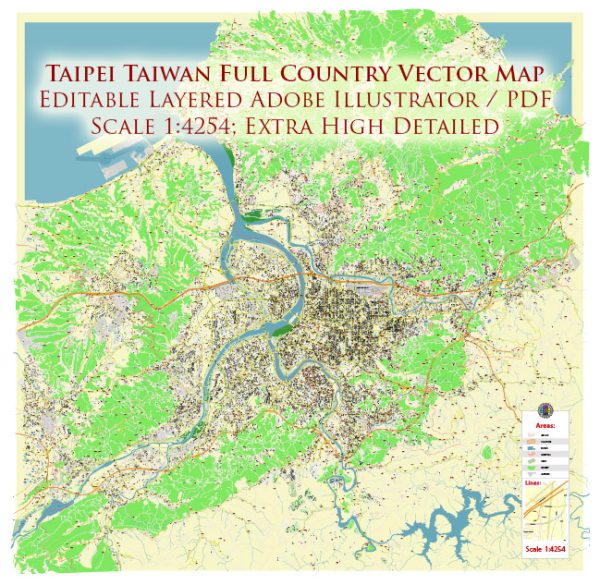Taipei, the capital city of Taiwan, has a rich history of urban development that reflects the island’s complex political and cultural evolution. The city’s growth can be divided into several key periods:
- Early Settlement and Indigenous Influence: Taipei’s history predates the arrival of the Han Chinese, with evidence of indigenous peoples living in the area for thousands of years. The Ketagalan people were the primary inhabitants when the Chinese began settling in the 18th century.
- Qing Dynasty Rule: In the 18th century, Taipei began to emerge as a settlement under Qing Dynasty rule. The Qing government established settlements, and Taipei became a key administrative center. The construction of the city walls and gates during this period laid the foundation for Taipei’s urban layout.
- Japanese Colonial Period (1895-1945): After the First Sino-Japanese War in 1895, Taiwan came under Japanese rule. The Japanese colonial government invested heavily in Taipei’s infrastructure, introducing modern urban planning concepts. Key developments included the construction of the Presidential Office Building, the Governor-General’s Office, and the Taipei Railway Station. The city’s gridiron street layout reflects the influence of Japanese urban planning.
- Post-World War II and Kuomintang Rule: After Japan’s defeat in World War II, the Republic of China took control of Taiwan. Taipei became the capital of the ROC, and the Kuomintang (KMT) government implemented various modernization projects. The city continued to grow, and landmarks like the Sun Yat-sen Memorial Hall were constructed during this period.
- Rapid Industrialization and Population Growth (1950s-1980s): Taipei experienced rapid industrialization and urbanization during the mid-20th century. The influx of rural migrants contributed to the city’s population growth. This period also saw the development of new neighborhoods and the expansion of infrastructure, including the Taipei Metro system.
- Economic and Technological Transformation (1980s-2000s): Taiwan underwent an economic transformation, evolving from an agrarian economy to a high-tech industrial powerhouse. Taipei played a central role in this transition, becoming a global hub for technology and business. Skyscrapers, including Taipei 101 (once the world’s tallest building), symbolize the city’s economic success during this era.
- Contemporary Taipei: In recent years, Taipei has focused on sustainability and green initiatives. The city has expanded its public transportation system, promoted green spaces, and invested in cultural and creative industries. Urban renewal projects aim to preserve historical sites while accommodating modern development.
Today, Taipei stands as a vibrant metropolis that blends traditional elements with modern urban living, showcasing the diverse layers of its historical development.


 Author: Kirill Shrayber, Ph.D.
Author: Kirill Shrayber, Ph.D.